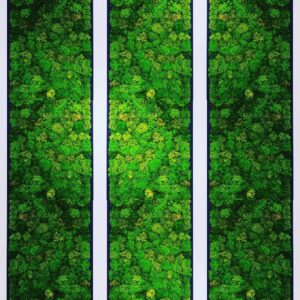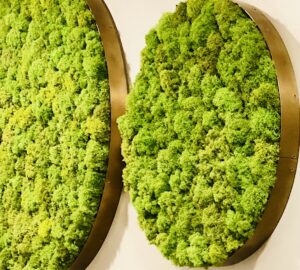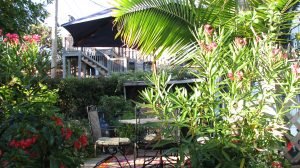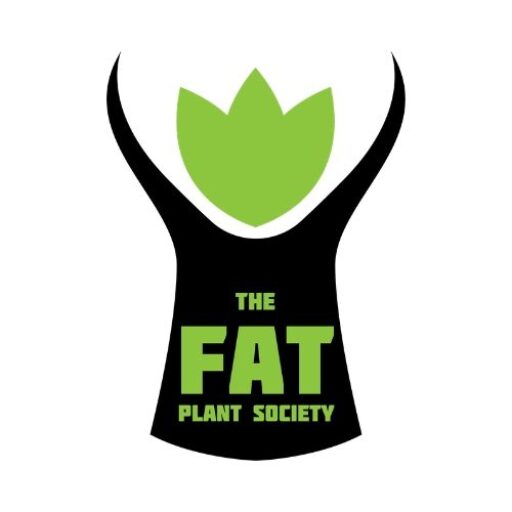We like to think we are pretty good listeners.
It is one of the core values of The Fat Plant Society–and we love that our listening skills play a role in not only understanding client “pain points” but also, product development. Our clients are our weathervanes for our work and strategic planning–we feel listening and asking for feedback really is the best method for product development. To that end, we’d like to share with what we have been hearing from our clients along with our recommendations and some research on how and why to introduce sustainable greenery in the workplace.
What we hear most often from business owners to restaurateurs to corporate purchasing agents and facilities managers is that they have spent $3K to $4K on plants (sometimes in a year) only to have them die, look sad and unappealing, and/or require an “on-site gardener” to maintain and keep alive. That statement caused us to ask why they were so insistent on continuing to spend money on greenery–I mean, you’d think they’d just scrap the idea and find another solution to for design and decor.
Here’s what they tell us:
1) Greenery softens a space and makes it more beautiful and welcoming upon entry
2) Staff request greenery in the workplace for the same reasons
3) Business owners tell us that they can literally see the benefits of greenery in the workplace in the form of increased happiness/positive attitude, creativity and reduced sick days

So while this post is absolutely for the so-called “black thumbs” of the world, it is also for business owners who want to leverage their interior design and greenery budget and make the workplace a beautiful, peaceful, inspiring space that reflects their organizational values and brand identity.
We spend the majority of our lives in the workplace so isn’t it even more important to ensure that the environment is as comfortable, pleasant as it possibly can be? And with the added benefit of reduced sick days, greenery can actually save employers up to $3K annually.
So in a sense, with a relatively small investment (moss walls run roughly 1/3 the cost of a plant wall), introducing moss walls, moss designs, succulents, and other sturdy indoor plants such as the ZZ plant, employers can actually save up to $6K annually (combining the savings on higher maintenance plants with the reduced sick days figure).
We have been meeting with and presenting to some really great people in workplace and public space architecture and design and turning their feedback into product development. From lighting fixtures to tables, to green walls and cubicles, virtually all workplace designers and architects are implementing biophilic design in some form. That’s our opportunity to share information about moss designs. And when we tell them that not only can we provide them a green wall, we can also save the organization that implements the wall money, over time, we usually see a broad smile and some knowing glances exchanged.

Before you ask how a green wall is going to save money, we must explain that we use real, preserved moss and here are just a few of the benefits of The Fat Plant Society moss designs:
- Moss does not require a dirt backing or any watering or misting of any kind (because it is essentially dormant) and despite its dormancy, it still eats up VOCs (volatile organic compounds) in the air like a sponge.
- Moss is a natural soundproofing material–captures over 90% of medium and high frequencies (voice frequencies).
- Moss is cold cracking and heat aging resistant (as a natural material, it is inherently resistant).
- Retains color for at least ten years, likely longer
- Moss does not need light so it truly can go into that conference room or office that has no windows and no light (so much more pleasant than looking at bulletin board walls, right?)
So not only is the moss a wonderful means of bringing green into the workplace, it comes in various colors, textures, and depths so the only limitation is imagination. Once we are aligned with our clients in our understanding of the design, we use the moss just as a painter would use paint to create a design that flows and elicits a lovely “WOW” response from employees, prospective hires, and vendors.
So how does a green wall or moss design installation save money?
For the answer, we look across the pond so to speak, to Oliver Heath Design, a sustainable architecture and interior design practice focused on improving health and well being in the built environment.
“I have been teaching architects all over the EU about the business and the ROI (return on investment) of biophilic design. Research suggests that it is an essential component of supporting healthy people,”
-Oliver Heath from CNN Interview, February 2019
9 in 10 workers in offices with biophilic design reported improved well-being after biophilia was incorporated into the work setting.
Source: Biophilic design: Why nature could be a good investment
We spend a little time in Europe and the U.K. and we have noted that in our experience as well as our research, companies in Europe, the U.K., and Australia are adopting green building practices and biophilic design as a matter of course in both corporate and public spaces and reaping the benefits of that decision in the form of a healthier, happier, workforce.

Back home in North America, we continue to ask questions of business owners and government facilities managers, and we learn all sorts of things.
Not surprisingly, the top concern for business owners, in all situations, is the budget and the bottom line.
Moss, then, becomes a win-win because not only does it serve the bottom line, it serves the wants and needs of employees as well.
We recently had an illuminating conversation with a business owner who said she felt like her office environment was too perfect and not “human” enough. She wanted her clients to see her design eye at work in her space and make them feel comfortable and welcome. The incredible thing about moss as a biophilic design tool it that, it is not flawless and clean, it’s natural. We think some of the most beautiful things in the world are things that are not perfect.
From the beautiful (but very old and imperfect) buildings in our founder’s home city of Copenhagen to our own, less than perfect backyard oasis that offers lush greenery in every corner (but without a perfectly manicured lawn), to the forest itself–what makes something beautiful is the sense of awe and wonder that it inspires.

We can relate to that because we live in a house that is 110 years old and much like nature, it seems to be saying, “I’m not perfect, don’t expect me to be. I am old and have weathered many a storm and I am still standing.” What makes this old house charming to us are its imperfections. What matters is that we take care of it.
We’re also watching the trends surrounding corporate responsibility and honesty and the immense value in admitting an error and then working to correct it. What matters are corrective actions. What matters are people.
Savvy employers get that.
People are the engine for the organization and people want to be in nature or feel as close to nature as they can. And since we have ample research and data to support the benefits of biophilic elements for people, we now know how to help them feel better, think better and be more creative at work.
So while you might not be able to take a Forest Bath (yes, it is a thing and you really do want to read this linked article) you can bring the forest inside the office for a lot less money than you might think and with zero maintenance. The (hypothetical) pro and con list for moss installations speaks for itself.
So cheers to people. Cheers to biophilic design and nature. Cheers to fewer sick days and more aesthetically appealing spaces. Cheers to being green.
Yours in the Love of All Things Green,

